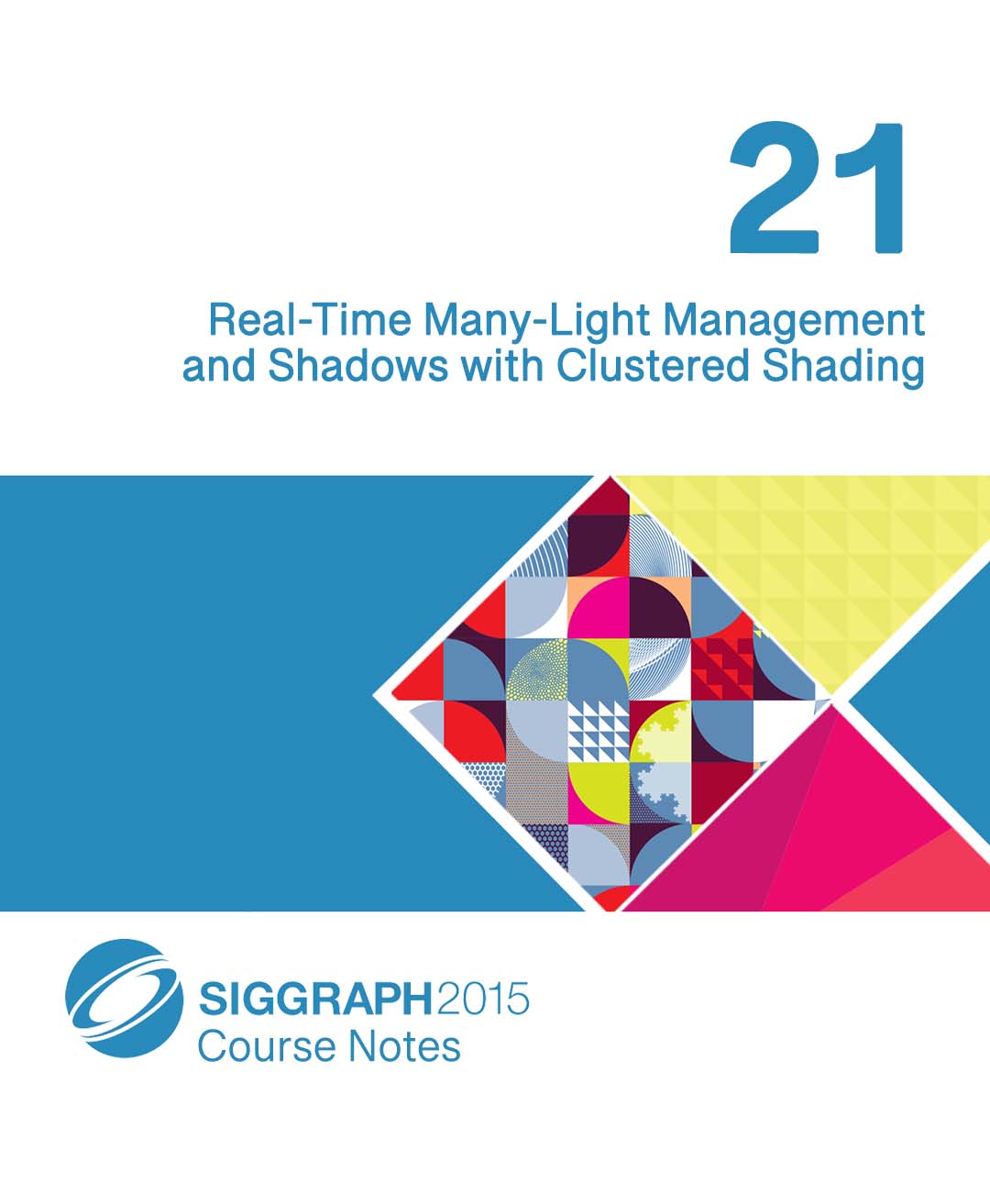“Real-Time Many-Light Management and Shadows with Clustered Shading” by Olsson, Persson and Billeter
Conference:
Type(s):
Entry Number: 21
Title:
- Real-Time Many-Light Management and Shadows with Clustered Shading
Course Organizer(s):
Presenter(s)/Author(s):
Abstract:
Prerequisites
Working familiarity with real-time shaders, GPUs, and graphics APIs. Attendees without this background may not fully understand the details, but will benefit from the high-level descriptions and analogies used to explain the contents.
Who Should Attend
Game developers, specifically graphics programmers who work with both traditional platforms and mobile hardware. Technical managers at game-development studios and graphics researchers.
Description
Using many lights in real-time applications has been an important goal for many years. The games industry, in particular, has strived to increase the number of lights to provide enhanced visual quality and realism. Today, high-end games often make use of hundreds of lights in each frame, and the number of lights is likely to expand in the future. The ability to efficiently manage and shade large numbers of lights presents many possibilities, apart from simply allowing light to be cast from many dynamic objects. It can also support visualizing global illumination solutions, or enable detailed artistic light direction.
Efficient real-time shading with many lights helps solve several problems facing the development of next-generation high-end games. To achieve the level of performance needed to make this possible, light management and shading have evolved dramatically in recent years. Both industry and academia have invested significant effort in pursuit of this goal, which has resulted in a large number of new and sometimes competing techniques.
This course presents an in-depth exploration of many-light management, starting with background and progressing to state-of-the-art research, including recent results on supporting shadows. The course combines production experience from game developers with the latest research into efficient many-light algorithms for both desktop and mobile hardware.




